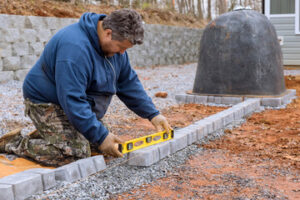Birth Injury Law Firm helps families get compensation for their child’s medical bills, home modifications, and therapies. They can help families prove that medical professionals violated standards of care by analyzing medical records and securing expert witness testimony.
Medical negligence during pregnancy, labor, or delivery can cause severe birth injuries. These injuries can be costly to treat and may result in long-term disability.

If your child has suffered a birth injury due to medical malpractice, you need the help of an experienced birth injury law firm. These attorneys will work to ensure your family gets the compensation it needs for the future. This compensation can cover your child’s medical bills, pain and suffering, and other expenses. It will also provide the financial security that you need to give your child a good life.
The firm’s lawyers have more than four decades of experience in personal injury litigation and trial advocacy. They are dedicated to obtaining justice for clients, regardless of the circumstances surrounding their case. Their team is available to answer questions and concerns about the legal process 24 hours a day, seven days a week. They are dedicated to providing victims with the highest level of service and compassion.
They have handled many different cases involving birth injuries and medical malpractice. They have recovered millions of dollars for their clients. Their clients include individuals and families whose children have suffered from a wide range of conditions, including birth injuries, spinal cord injuries, cerebral palsy, and infections.
One of the top birth injury law firms in Queens, Krause & Glassmith, is committed to fighting for the rights of injured children and their parents. Their goal is to recover maximum compensation for their clients. They have an impressive track record of success and have received numerous awards and recognition for their work. The firm offers free consultations and will answer your questions 24 hours a day, seven days
A reputable birth injury lawyer can help you secure the compensation that you deserve for your child’s medical expenses and other losses. They will also fight to ensure that the negligent party is held accountable for their actions. They will guide you through the legal process, which involves establishing legal responsibility and liability, collecting evidence, working with medical experts to support claims, and negotiating settlements.
The team at Lindstadt Law PLLC is passionate about helping the wrongfully injured in Queens, NY. The firm has been serving victims of medical malpractice, such as birth injuries, for more than 45 years. It is the only Queens firm that is solely devoted to the representation of medical negligence cases.
The Law Office of Gerald Oginski
If your child suffered an injury during delivery, you can file a birth injury lawsuit against the medical professionals responsible. This includes doctors and midwives, as well as nurses and hospitals. These legal claims can lead to compensation for your child’s medical expenses, pain and suffering, and other losses.
A Queens birth injury law firm will help you determine if your case is strong enough to win in court. It will also negotiate with insurance companies to get the best settlement offer. Moreover, lawyers can assist you with filing paperwork and preparing medical records. They are also adept at investigating malpractice incidents and establishing negligence.
The Law Office of Gerald Oginski is a New York firm that handles birth injuries and other types of medical malpractice cases. The firm has more than 30 years of experience in handling injury and malpractice claims. Its clients include individuals, families, and small businesses. Its attorneys are highly rated and speak several languages.
A lawyer can help you file a birth injury lawsuit against healthcare providers for injuries sustained during labor and delivery. The legal process involves proving negligence, working with experts to support your claim, and negotiating with insurers to get maximum compensation for your loss.
In addition to birth injuries, the firm also handles personal injury and medical malpractice cases. Attorney Michael A. Lindstadt, the firm’s sole practitioner, has been representing wrongfully injured clients in Queens since 2005. He specializes in birth injuries, failure to diagnose cancer and cardiac conditions, and surgical malpractice cases.
The Queens birth injury law firm of Latos Latos & Associates PC represents parents whose newborns suffer injuries due to the carelessness of medical professionals. The firm seeks compensation for victims of medical errors, including anesthesia mistakes, surgical errors, and emergency room negligence. Its clients include parents whose children have cerebral palsy, facial paralysis, and fractured bones. The firm is experienced in resolving claims against doctors, midwives, nurses, and hospitals.
DeFrancisco & Falgiatano
The birth of a child should be an exciting and joyous occasion, but sometimes newborns suffer serious injuries during delivery due to medical negligence. A Syracuse birth injury lawyer can help injured families recover damages from negligent doctors and hospitals. For example, if an obstetrician should have ordered a C-section in response to signs of fetal distress but failed to do so, and your baby suffered from oxygen loss and developed cerebral palsy as a result, you may be eligible for damages.
Cerebral palsy is a neurologic condition that affects a person’s ability to move and control their muscles. It can be devastating for a family to deal with this condition, and they deserve compensation from the party responsible. A Syracuse birth injury attorney can help you file a claim against the responsible health care provider and their insurance company to get justice for your child.
An experienced Syracuse birth injury lawyer can provide you with the best legal representation in your case and get you a fair settlement. These attorneys will take the time to listen to your concerns and explain all your options. They will also fight for your rights and secure the maximum compensation possible for your case. In addition, they will handle all the legal complexities of your case so that you can focus on your recovery and your family.
A reputable birth injury law firm will have a proven track record and successful verdicts. This is an indication that they have a strong understanding of the law and will not hesitate to use all available resources to achieve a positive outcome in your case. They will review the facts of your case, determine if medical malpractice occurred, and will work to get you a fair settlement.
FindLaw is the largest online attorney directory. Search more than one million listings for an experienced attorney near you. Our lawyers are highly rated by their peers and have been recognized by Super Lawyers. Super Lawyers is a research driven, peer influenced rating system that selects only the top 5% of attorneys in each state.
JJS Law
The birth of a child should be one of the most joyous moments in a family’s life. Unfortunately, medical negligence during the delivery process can have devastating consequences for both mother and baby. If your child has suffered a serious birth injury, a lawyer from JJS Law may be able to help you claim compensation for the losses you have experienced.
In a successful lawsuit, you must prove that the doctor’s actions fell below the accepted standards of care for their profession. To do so, you will need to review medical records and gather expert opinions. In addition, witness testimony can also be valuable evidence in your case. Despite the best efforts of doctors and nurses, there are times when complications arise during labor and delivery that cannot be prevented. These situations can lead to severe injuries or even death. When this happens, your lawyer can file a wrongful death claim.
If you have a child who has cerebral palsy, you may be entitled to financial compensation for the damage he or she has sustained. This condition is a result of brain damage, and it can affect the way a person moves and interacts with others. It can also cause learning disabilities. If your child has this condition, it is important to make a prompt diagnosis so that he or she can receive the right treatment and therapy.
The firm’s founder, John Driscoll, is a renowned trial attorney with decades of experience litigating complex civil cases. He operates out of Royal Oak, Michigan, and has built a national reputation for his skills. He regularly receives referrals from attorneys across the country, a testament to his dedication on behalf of his clients.
His firm is well-versed in a wide range of legal matters, including personal injury and medical malpractice claims. It has represented clients in high-profile cases involving large insurance companies and other major corporations. Moreover, the firm has handled large class action product liability cases involving dangerous drugs and defective medical products.
It is also skilled in representing employees and retirees in disputes with their employers regarding their disability and retirement benefits. It has recovered more than $65 million in benefits for its clients over the past 20 years.








